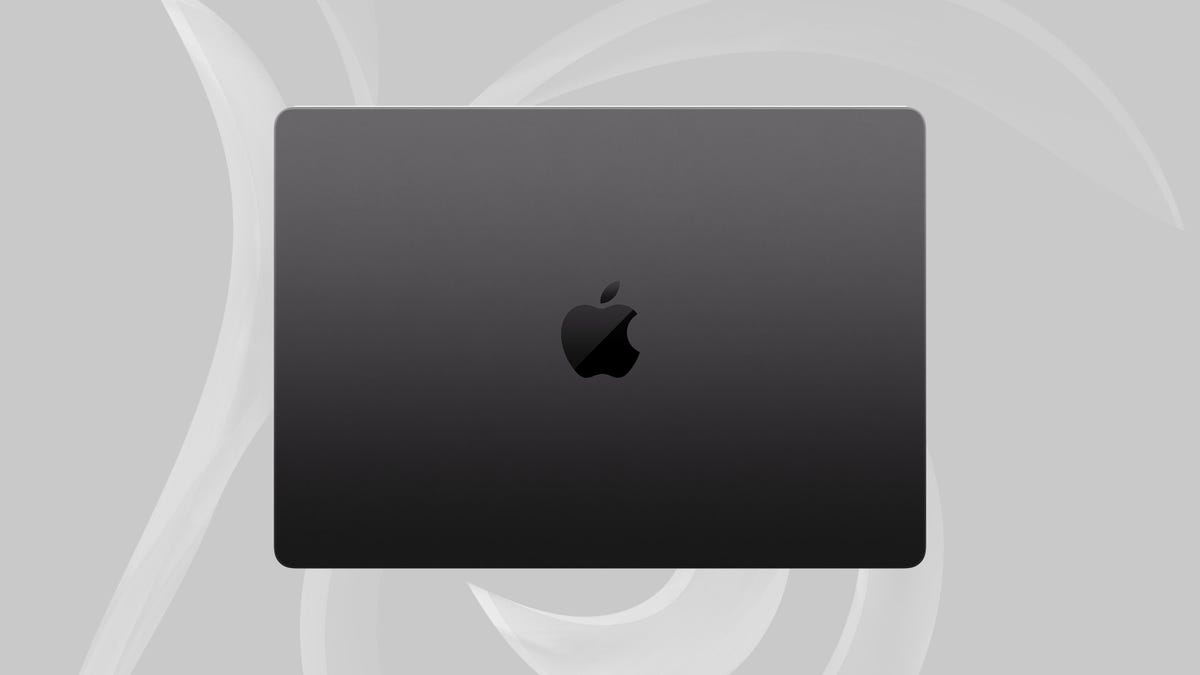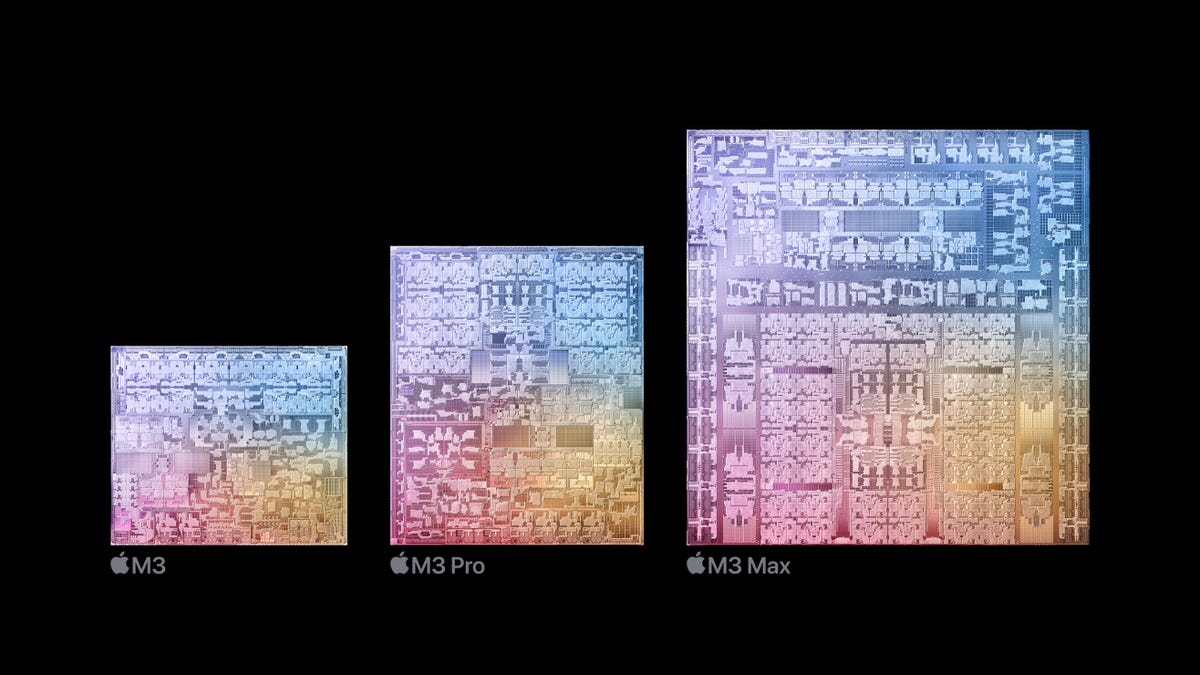It’s an odd time for Apple to launch new processors, but launch it did. The company on Monday rolled out the update to most of its processor line, the M3, M3 Pro and M3 Max, along with refreshes of systems using them: The iMac and 14- and 16-inch MacBook Pro. All are available for preorder now and shipping next week except for the M3 Max models, which are slated to ship later in November.
The processor upgrades bring typical generation-over-generation performance bumps — generation-over-two-generations for the iMac, which remained on the M1 chip. In other words, it’s somewhat faster, significantly faster or seriously faster depending upon what you’re doing, what you’re comparing it to and who’s doing the comparing. But they’re likely fast enough that given the last generation of MacBook Pro 16 just shipped in February, I’d be peeved if I’d bought it.

The iMac jumps to the M3, which Apple claims makes it twice as fast as its predecessor, the two-generations-old M1. There’s nothing else new; same colors, same screen, same accessories and same design. It starts at the same $1,299 price as before.
You’ll be able to get the updated MacBook Pros in a new Space Black as well as silver, though the Black is available only in the M3 Pro and Max configurations. Their screens remain the same, but Apple has upped the power it drives them with, which raises their standard peak brightness to 600 nits, up from 500 nits. And Apple added a fingerprint-resistant coating to avoid the Midnight MacBook Air kerfuffle.
The 14-inch M3 model is new, in that there were only Pro and Max versions for the previous model. Using the M3 lets Apple set a lower starting price of $1,599 for the 14; the next step up Max model still starts at $1,999. One perk you may get with the 14-inch model is improved battery life: Apple rates it as 22 hours, up from 18, and the same as the MacBook 16. As before, the 16-inch model comes in M3 Pro and Max variants and starts at $2,499.
What the chips bring to the party
Most notably, in addition to the general speed gains and optimizations, they inherit some advancements Apple rolled out with the A17 Pro chip in the iPhone 15 Pro and Max. They use the same 3nm fabrication process, for which Apple chose to engineer into a smaller die (it could have used the same size die and crammed more stuff in); a smaller process generally means faster and more power efficient overall. And going with the smaller die leaves more room for cooling — faster usually also means hotter.
Apple continues one of my least favorite traditions, putting variations of a chip under one name. It’s seriously confusing. You can’t get them in all combinations, though. The M3 Pro with 11 CPU cores comes with 14 GPU cores and the one with 12 CPU cores comes with 18 GPU cores. That’s not what’s confusing. It’s that if I ask someone which M3 MacBook Pro they have, they have to specify the CPU and/or GPU cores explicitly, if they even know; they can’t say just «the M3 Pro» model.
Apple M3 chip lineup
| Apple M3 | Apple M3 Pro | Apple M3 Max | |
| Total CPU cores | 8 | 11 or 12 | 14 or 16 |
| Performance cores | 4 | 5 or 6 | 10 or 12 |
| Efficiency cores | 4 | 6 | 4 |
| GPU cores | 10 | 14 or 18 | 30 or 40 |
| Neural engine cores | 16 | 16 | 16 |
| Maximum memory supported (UMA) | 24GB | 36GB | 128GB |
| Peak memory bandwidth (GBps) | 100 | 150 | 400 |
| ProRes accelerators | 1 | 1 | 2 |
| AV1 decoding | Yes | Yes | Yes |
As you’d expect, the M3 chips have more CPU cores, or at least the Pro and Max do. The M3 has the same nominal specs as the M2, the M3 Pro has the same core count but a different balance of performance and efficiency cores (six of each vs. eight P and 4 E) and supports up to 36GB of memory rather than 32GB. The Max gets the biggest bump, to 16 CPU cores (12P and 4E) and 40 GPU cores. In terms of both types of core counts, it’s still behind the M1 Ultra, but it does get a boost to 128GB maximum memory. All of the chips get AV1 — a popular video codec — hardware decoding via the updated Media Engine.

The M3 series also has the revamped graphics architecture that debuted in the A17 Pro, which isn’t just faster but adds hardware acceleration for ray tracing and mesh shaders. Ray tracing delivers more realistic rendering of lighting, reflections and procedural textures for applications and games that have been designed to take advantage of it. Mesh shaders take the graphics data used to calculate object visibility and and rendering characteristics (vertices and geometry) and do more of the processing up front, more efficiently and in bigger chunks that older methods. This in turn improves gaming frame rates.
Another change to the GPU operation is Dynamic Caching, which more efficiently allocates memory between the CPU and GPU as needed so that it’s not starving or overallocating to either one. This is important for Apple’s chips because its Unified Memory Architecture basically puts everything in a big pool.

